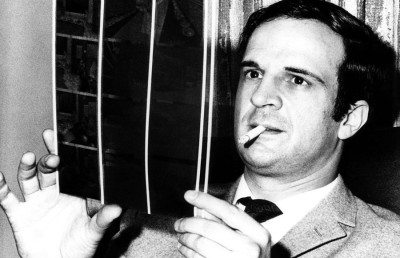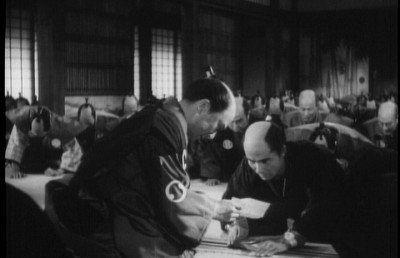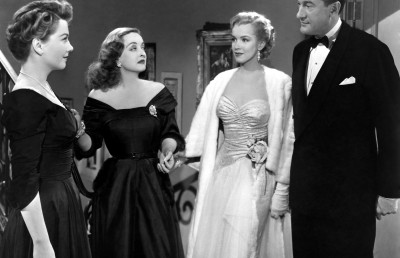Beyond Flesh: Queer Masculinities and Nationalism in Israeli Cinema
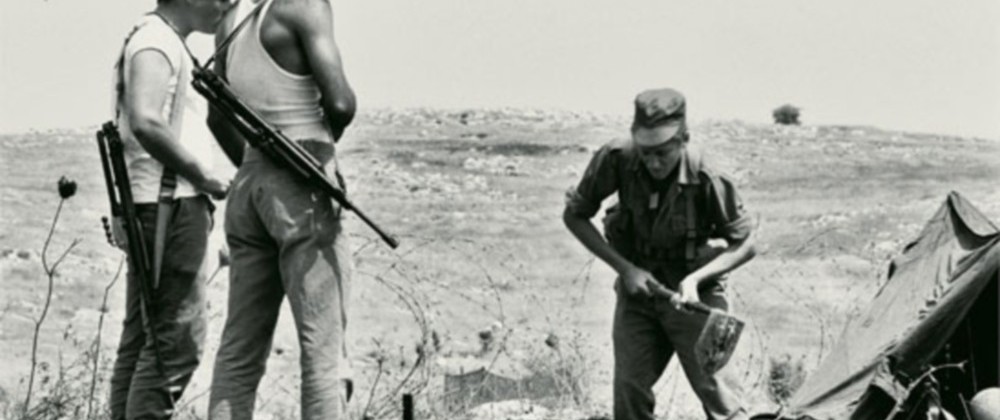
Beyond Flesh : Queer Masculinities and Nationalism in Israeli Cinema
by Raz Yosef, 2nd edition, New Jersey; Rutgers University Press, 2004
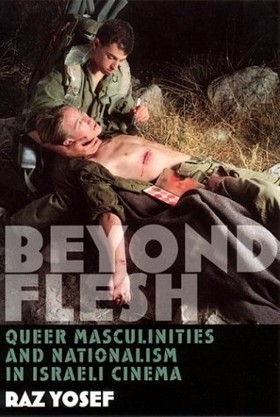
In Beyond Flesh: Queer Masculinity and Nationalism in Israeli Cinema, Raz Yosef adds another research topic to the field of Israeli cinema. Ella Shohat, in Israeli Cinema: East/ West and the Politics of Representation, and Yosefa Loshitzky, in Identity Politics on the Israeli Screen, focused on the discussion on racism and sexuality. Continuing on the same track, Raz Yosef deals with the shaping of masculinity and queerness in a society framed by heteronormativity.
Zionism was not only a political project but also a sexual one. During the Second World War, the male Jews represented degeneracy and disease. They were seen as “feminine” and therefore considered as homosexuals. The main goal of the Zionist ideology was to redeem the Jews from their former representations and normalize the Jewish male body. Zionists enforced a very harsh heterosexual imaginary and political system. The New Israeli, the Sabra, was imagined as strong, healthy, hardworking and very masculine. Cinema was a very efficient tool in the process of fostering and uniformising the new Israeli society. The Zionist chose the Ashkenazi (European Jew) as a universal signifier on which the Israeli society had to base their imagination. By ironically imposing a universal signifier, the male imaginary and identity could only be made with rejections and dichotomies. The Zionist Father Figure thus created the laws to build the new male Israeli identity. Zionism worked with binaries, constantly rejecting the “other”: feminine/masculine, East/West, Israeli/Palestinians, Ashkenazi/Mizrahi, etc.. Using deconstruction as a way to criticise the Zionist ideology, Yosef seeks to answer to two questions: can the male heterosexual identity shape itself without the “other”? Can the heterosexual male identity remain in the Symbolic? The author praises the fluidity of the male identity. According to him, the heterosexual male body cannot live without his structural “other.” His first aim is to prove that Zionism’s dichotomies fail and increase the attraction and identification to the abjected “other.” This ideological oppression leads the male body to remain in the realm of the Symbolic, but Yosef demonstrates that to gain back its male identity the body needs corporeality. Through the different chapters of the book, the body undergoes different changes: from the symbolic metaphor of the Zionist pioneer or soldier to the corporeal individual who seeks a male body identity through eroticism. The author states very clearly that his work is indebted to the field of Film Studies and he tries to look at the evolution of the vision of the male body and masculinity in Israeli cinema. He chooses to look at a very wide range of films starting from the 1930s to 1990s. In his historically informed theoretical research, the author tries to tackle these issues from different perspectives: he uses queer theory encompassing psychoanalysis, feminism, deconstruction and Michel Foucault’s writings. Yosef defines (2004 p.4) queer theory as “an analysis which challenges the theoretical and political idea and practice on sexual naturalness.” To anchor it in a socio-political context he also uses postcolonial theory to study the question of race, ethnicity and nationalism. For this theory, he uses methodologies such as Marxism, post-structuralism and Frantz Fanon’s theory on the relationship and attraction between the colonizer and the colonized.
Yosef states in his book that he studies the representation of the male body according to cultural changes in the Israeli society. His first chapter deals with the Zionist Ideology, its biopolitics, eugenics and its sexual repression. In this part of the book, the author establishes the main definition of the representation of the Zionist male body. The second chapter deals with the desire and anxiety of the Israeli male body who longs for his queerness and his own identification. In this chapter, the author disembodies the symbolic body and looks at its borders to corporeality. Indeed, the Israeli male body is represented using masochism as a way to break the Zionist Laws. The third chapter deals with Zionists’ ambiguous rejection of the Mizrahi Jews (Oriental Jews). In the Israeli male imaginary, the sexualized Mizrahi body is displaced onto the abject image because he is linked to the Arabs. The fourth chapter tackles a racist issue: the colonization of the Palestinian “other.” It mainly deals with the feeling of attraction/repulsion in the Israeli/Palestinian Conflict. Finally, the last chapter deals with the apparition of the homosexual on the Israeli screen and the shattering of the Zionist heterosexual laws on the male body.
Even if the author tries to achieve his aim of unravelling the mysteries of the Symbolic Israeli male body, it seems that Yosef’s very ambitious work is overlooking crucial notions. He does use the theories mentioned in his introduction but with a high level of generality. I think the author was far too ambitious and perhaps became overwhelmed with all the theories and films he had to analyse.
To challenge the author and the book, I think it would be interesting to project which aspects could have been studied in more depth. Here is a road map of my review. One of my main criticism’s is the sudden disappearance of Michel Foucault. The author uses his theory only to illustrate the notions of biopower and the discipline of sexuality. It is very paradoxical because one of the theories stated in the introduction was deconstruction. Michel Foucault is a major author on deconstruction and I think it is a shame that Yosef did not go further with Michel Foucault’s theory of sexuality. As I mentioned before, the author clearly stated that his work was indebted to the field of Film Studies, and the author does give the reader a very wide range of films. Yet in the book Yosef analyzes only seven out of about forty films to illustrate trends in the representation of the male body. In his introduction, the author argues that he will try to explain the positioning of “femininity” within the articulation of male homoeroticism. He mainly uses the work of Kaja Silverman, transforming the male body into a spectacle and therefore producing visual erotic pleasure for the male audience. The gaze has an important role in the shaping of the Israeli masculinity as the Zionist gaze objectifies the forbidden “other” capable of threatening the normative Laws of the Zionist ideologies. The themes of masochistic pleasures and bodily destruction are very striking and they are important topics in Israeli cinema. In my opinion, the author should have gone more in depth in the idea of jouissance and a sadistic pleasure in destroying the Israeli male body. Death is an ironical fluidity to finally escape the Zionist Law. Lastly, the most striking flaw of this book is the lack of conclusion. Does the author want to follow the deconstructivist open-end? It is very surprising and frustrating to arrive at the end without a wrap up of the aims of the book and the answer to his research. Without a conclusion, Yosef unfortunately fails to persuade the reader.
In my opinion, the author wrote an “Archeology” of the representation of the Israeli male body on the Israeli screen. In The History of Sexuality, Michel Foucault does not study the history of sexuality itself, he studies “the history of discourses.” Even though Yosef states in his introduction that he does not look at the history of the representation of masculinity, he cannot escape the historical frame starting from the creation of Israel to the 1990s. The state of Israel was built on a very strong and fixed ideology. Like Michel Foucault, the author focuses on “the history of discourses.” Each chapter of the book follows the evolution of the country and the changes of representation of masculinity according to the conflicts with Palestine, ethnic issues with the Mizrahi immigration, and the implementation of the Gay community.
Another book which could have been useful for Yosef is Nurit Gertz’s Myth in Israeli Culture: Captives of a Dream, which focuses on the different discourses and cultural changes in Israeli society. In her book Gertz states that the arts are here to blur ideologies and narratives. Yosef’s book does follow a chronological order, but the author needs these frames to study the fluidity of the Israeli male body and its relationship with the “other.” Yosef uses deconstruction to interrogate and disrupt the harsh boundaries settled by Zionism. I think that the author would have benefited by using Michel Foucault’s ideas more consistently throughout his book. Yosef constantly uses a great number of theories from different authors; had he focused on Michel Foucault and The History of Sexuality his study would have been homogeneous, efficient and clear. As Israel is a state created by Europeans, The History of Sexuality fits exactly the model of the sexual power of the Israeli society. Yosef could have employed Foucault to analyze the representation of masculinity and sexuality according to Nurit Gertz’s study on discourses.
In his first chapter, Yosef grounds the Zionist ideology and defines the image of the male body according to the Zionist Father laws. Cinema was an important Zionist apparatus to foster the imagination and the nationalism of the country. Yosef deals with national regeneration narrative in which a weak male character from Europe arrives in Israel to gain emotional and bodily salvation. The body shaping is linked to the country regeneration and the nation building. The author uses the film Adama by Elmer Lerski (1947) to illustrate the change that the Jewish European body has to go through to become a real Sabra (Israeli Jew). It seems that the enforcement of the Zionist male identity gave birth to a fetishistic image of men: “long takes of muscular half-naked male pioneers are linked with close-up of drilling machines” (Yosef, 2004). In the national ideology, the Sabra, the Israeli man, is healthy, strong and hard working. At this point Yosef uses Michel Foucault to emphasize the notion of biopolitics. In a (Zionist) effort to normalize and discipline sexuality, the creation of the new masculine Jew was linked with the idea of breeding children in a specific environment, with the aim of achieving a healthy body and racial improvement. Yosef also quotes Michel Foucault to deal with eugenics, imposing on the Israeli society a sexual discipline and enclosing the male body in heterosexuality. Sexuality and masculinity are social constructions shaped by the Zionist Laws. According to Michel Foucault, governments invent multiple sexualities to classify and discipline them, rejecting the “deviant” “others.” Yosef should have emphasized that cinema has the power to blur and subvert ideologies, constantly making, unmaking and remaking sexualities and sexual orientations.
The author deals with the changing narratives in Israeli cinema: the regeneration narrative, the Mizrahi parody narrative, the forbidden love narrative, the routine life narrative and even colonialist narrative Europe versus Asia. The Zionist ideology wanted to create the essence of the male body, the male sex which could not be subverted. Sexuality, on the contrary, has no natural essence and Yosef proves it in his book by illustrating it with the representations of the “others” (the Mizrahi, Palestinians, Woman and Gay) sexualities.
Yosef could have simultaneously used The History of Sexuality and his postcolonial theory because of the status of sexuality as a social construction, and the creation of a representation. Sexuality and gender is first of all based on the construction of the self. The main idea of the book is the building the Israeli identity on screen. The masculine body is created through interactivity with the other male body. Cinema is therefore extremely important as it mirrors an image of the male body towards a male audience. When commenting on the building of one’s consciousness in The History of Sexuality, Ken Plummer says (1993; p.81): “the self is a symbolic representation, created when consciousness bends back on itself and becomes its own object. It is the result of reflexivity. Turned on itself, mind becomes both subject and object, I and me, observer and observed.”
Yosef chooses films which will challenge the main representation of the Israeli male identity. The heterosexual Israeli male body cannot find himself without his structural “other.” The author is cinematically deconstructing the body of the Israeli male body. Most of the films use “other” male bodies to counter and strike gender anxiety in the heteronormative body. Yosef challenges the main image of the Zionist male body on different levels: gender, ethnicity and race. According to Michel Foucault in Punishment and Discipline power had to be shown and the audience had to see it.
The first film Yosef analyzes is Paratroopers by Judd Ne’eman (1977). This film, set amongst the Israeli army, presents a soldier who is different from the others: he is more feminine and therefore has to be rejected from the body and the mind of the male national body. Wiseman, the feminine soldier, becomes the locus on which all the Zionist soldiers project their fears and anxieties (the archetypical “other”). Wiseman questions their identity and their heterosexuality. Director Judd Ne’eman develops both an attraction and tension between the Male nationalist body and the weak and feminine body. By increasing the tension, the director questions the male subjectivity; as the gaze progressively changes the feminine male body becomes a forbidden place of pleasure that has to be displaced.
The Mizrahi films subverted the Zionist’s policy of homogenization of the body. They had to be “normalized and approved men” (Yosef, p.87). The author, here, deconstructs the National representation of the male body, rejecting the Oriental Jew seen as an Arab. Israeli’s first Prime Minister and Zionist leader Ben Gurion’s discourses compared Oriental Jews to the African slaves who were brought to America. They were brought to Israel to escape the Arab threat and to become civilized Jews. Mizrahi men had to live in an inhabitable zone of ambivalence in which they cannot find their identity. The Mizrahi men were objectified to reduce the threat of disturbing the Ashkenazi (Jews from Western and Central Europe) consciousness. This idea can also be seen from a postcolonial theoretical perspective, as the author uses Frantz Fanon to explain that the colonized cannot transcend the dialectic of subject-object and therefore becomes all object, only a body.
Yosef deals with the image of the Mizrahi constantly fighting with his own image. As a trend, the Bourekas films, which were popular in the 1960s and 1970s, tried to tackle the former ideas the Zionist Ashkenazi applied to the Mizrahi Jews. In these films the Mizrahi display a very strong heterosexuality and machismo in an effort to subvert their former prejudice about passivity and sexual perversions. These films foster their narratives around heterosexuality, religion, family and solidarity, concepts that the Zionist Father encompass in his Laws. Yosef also analyzes the films of Israeli comedian Ze’ev Revach to study the representation of the Mizrahi Male Body which has to project itself into the Ashkenazi body. His body is constantly in the process of becoming. Ze’ev Revach parodies and therefore breaks the dichotomies created by the Zionist laws. The new narrative gives the Mizrahi characters fluidity to project them and mimic the Ashkenazi characters. The Mizrahi becomes a “grotesque” body. The author quotes Mikhail Bakhtin (theorist of the ‘Carnivalesque’) to deal with the masquerade and the grotesque (2004, p.113): “The grotesque body … is a body in the becoming. It is never finished, never complete: it is continually built, created, and builds and creates another body. Moreover, the body swallows the world and is itself swallowed by the world …” By masquerading themselves it seems that the Mizrahi male body escapes the objectification process of the Ashkenazi gaze.
On the Israeli/Palestinian conflict level, the main narratives are based on a forbidden love. The biggest fear of the Jewish Israelis is hybridization. According to the colonial discourse, the threat is that by acknowledging the “other,” the latter will enter the subjectivity of the colonizer and thus break his mastery. There is an ambivalence of narratives in which the male body follows the narrative of castration by having an affair with an exotic Palestinian woman or on the contrary a narrative which emphasizes the deep anxiety about queer emasculation and attraction for the “other” male body. Many Zionist films follow the narrative of castration in which the male body imposes its heteronormativity. The author uses the film Sabra by Alexander Ford (1933) to explain the ambiguous position on which the Israeli male body stands. Sabra is about a group of Israeli pioneers who come to Palestine to dig a well which is “sterile” and “unproductive.” The vagina-like well does not respond to the men’s penetration and thus places them in front of a symbolical impotence that they are going to deny. It makes them incapable of submitting to the law of castration and emphasizes their homosexuality. The Nationalist Israeli male body does not want to be castrated and passive. Nurit Gertz in Myths in Israeli Culture: Captives of a Dream deals with the “Destruction to redemption narrative” after the 1980s. The film Beyond the Walls by Uri Barbash (1986) deals with a group of prisoners: a Mizrahi criminal, a Palestinian, and an Israeli activist for the Liberation of Palestine. They are all in the same cell. All of them were rejected and punished by the nationalist Israeli law. The Law is presented as the prison, symbolically framing them in a strict mentality. What Nurit Gertz explains is that there has been a change from the demonization of the enemy and the rejection of the “other” to a rejection of the whole Israeli nationalist ideology. The three “oppressed” characters are filmed as such: in cramped cells, behind the bars and through doorways. The Israeli male body cannot stand living, rejecting the tabooed “other.”
In his introduction, Yosef said that he would take into account the point of view of the directors and the audience. With this in mind he could have deconstructed the male subjectivity by switching the perspective from Israeli to Palestinian. Nurit Gertz does this with Avanti Popolo, a film made by an Israeli director and shot from the point of view of a Palestinian. This technique is used as a way to deconstruct the Israeli male subjectivity and the nationalistic boundaries.
To remain in the frames of the Zionist ideology, the Israeli male body has to go through masochism. As he yearns for his attraction to the “deviant” “others,” he painfully keeps himself from transgressing the Father’s Law. The Zionist male body needs to stay in the symbolic. Klaus Theweleit writes (quoted in Yosef 2004, p.51): “the most urgent task of the man of steel is to pursue, to dam in and to subdue any force that threatens to transform him back into the horribly disorganized jumble of flesh, hair, skin, bones, intestines and feelings that calls itself human.”
According to the author masochism is the only way for the Israeli male body to regain some corporeality and focus on its own identity. The Israeli male body is filmed living in suffering and even death. It constitutes itself with heteropathic identification: the body lives, suffers and experiences pleasure through the other, the transgressive “other.” The body goes through agonizing pain, mutilation and death to transgress the Zionist Law and satisfy his desire for “lost queer attachment.” In the film One of Us by Uri Barbash (1989), the bodies of soldiers rejected from the army are the loci of this masochistic pain.
The director decided to show unsutured male bodies in a sutured film structure. The author compares the skin of the male body to the cinematic skin. The skin represents the border between a chaotic interior and a disciplined body. What is homogeneous belongs to the realm of the Symbolic. Uri Barbash films his bodies fragmented. This contrast (between the homogeneous and the fragmented) creates a parallel between the torn bodies of the Israeli soldiers and the torn cinematic skin. The scars and wounds on the soldiers’ bodies represent the fluidity of their being. The male bodies in the film are wounded, which gives them more fluidity. It is very impressive to see how the author links masochism and the rejection of nationalism to the representation of the body on the Israeli screen.
What I found surprising in Beyond Flesh is that the author only uses the term “jouissance” at the end of the book, leaving little space to develop the concept. This is unfortunate, given that the concept could have added to the study, especially when dealing with masochism and death. The author talks about the other ideal Zionist body: “The living-dead” who represents the dead pioneer who fought for his country. Jouissance can be seen a way to shatter the self and satisfy the death drive. According to Lacan in the Seminar XI, jouissance does not have a calming effect because it does not achieve satiety, but builds the historical. Kaja Silverman when talking about historical trauma explains that the trauma is like a breach in the male or the soldier’s consciousness. Jouissance is a force challenging the death drive. The death drive seeks the destruction of one’s identity; Yosef looked at death as a way to dissolve oneself to gain some fluidity and embrace the “other.” Death was a passivity that the Israeli male soldier longed for. The Israeli male bodies have always been the witnesses of a war and therefore a historical trauma that they try to repress to move on with their lives. This historical trauma is what creates anxiety and fear in the male subjectivity. The body who witnessed a war suffers from “reminiscence” and they do not want the trauma to happen again. They repeat what has been done to them on their enemy, repeating the trauma on other bodies. Jouissance establishes the memorable that the Israeli male body needs to build himself a history and an identity. The notion of jouissance is a force which creates a tension between the passive and active, life and death. The Israeli male body has to master himself and has to cope with these two tensions. The Israeli male body has to fight between the denial of his history and the building of his identity, which cannot escape the past.
In conclusion, Yosef uses deconstruction to subvert the very rigid and powerful Zionist ideology. The author explains that Zionism was a sexual project and its aim was to shape Israel’s masculinity. Yosef achieves his stated goal of giving full importance to the discipline of Film Studies, and not using it simply to illustrate an historical fact. Even if the author gives a comprehensive analysis of the representation of the male body on the Israeli screen, his ambitious project overlooks some important notions (jouissance, the Palestinian perspective, etc.). He overwhelms the reader with a great number of theories, authors and films, whereas his study may have gained in clarity and focus by concentrating on the theoretical work of Michel Foucault (The History of Sexuality) and Nurit Gertz (Myths in Israeli Culture: Captives of a Dream) to study the representation of the male body on the Israeli screen according to the Israeli ideological discourses.
Bibliography
Braunstein Nestor. (2003) “Desire and Jouissance in the teachings of Lacan,” in Rabaté Jean-Michel. The Cambridge Companion to Lacan. Cambridge, U.K. ; New York : Cambridge University Press pp.102-115.
Gertz Nurit (2000). Myths in Israeli Culture: Captives of a Dream. London: Vallentine Mitchell.
Milligan, Don (1993). Sex-Life: A Critical Commentary on the History of Sexuality. Pluto Press. London.
Plummer, Ken (1993). “The Construction of Many Sexualities,” in Sex-Life: A Critical Commentary on the History of Sexuality. Pluto Press. London.
Silverman, Kaja (1992). Male Subjectivity at the Margins. New York ; London : Routledge.
Yosef, Raz (2004). Beyond Flesh: Queer Nationalism and Nationalism in Israeli Cinema. 2nd ed. New Jersey – Rutgers University Press.
Films:
Adama (Lerski Elmer, 1947).
Paratroopers (Ne’eman Judd, 1977).
Sabra (Ford Alexander, 1933).
One of Us (Barbash Uri, 1989).
Avanti Popolo (Bukai Rafi,1986).



